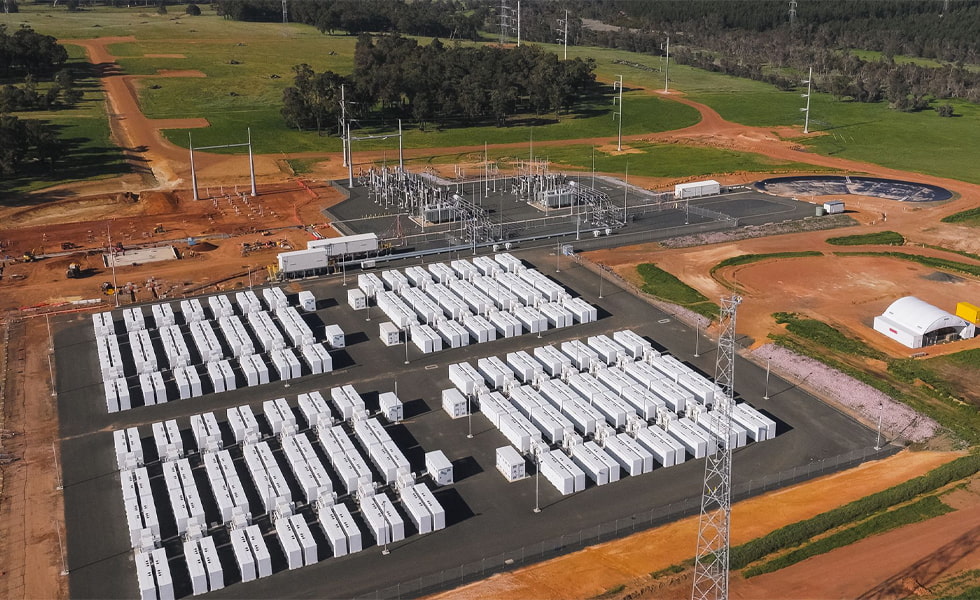
1. Definition of Independent Energy Storage
Independent energy storage refers to new energy storage projects that utilize physical energy storage, electrochemical energy storage, electromagnetic energy storage, phase change energy storage, and other technologies other than pumped hydro storage. These projects possess independent metering and control technologies, are connected to dispatch automation systems for grid monitoring and dispatch, comply with relevant national standards and market operating requirements, and possess legal entity status.
Independent energy storage, or independent energy storage power stations, differs from renewable energy storage or energy storage jointly established with thermal power plants. Its independence lies in its ability to directly sign grid connection and dispatch agreements with power dispatch agencies as an independent entity, regardless of location. Independent energy storage can take various forms, including lithium-ion batteries, compressed air storage, flywheels, and liquid flow storage. According to the National Development and Reform Commission's "Notice on Further Promoting the Participation of New Energy Storage in the Electricity Market and Dispatching (Development and Reform Commission Operation [2022] No. 475)," new energy storage projects that meet the technical requirements for independent metering and control, are connected to a dispatching automation system that can be monitored and dispatched by the power grid, comply with relevant standards and regulations, and meet the requirements of power market operators, and possess legal person status, can be converted to independent energy storage and participate in the electricity market as independent entities. New energy storage projects that are currently deployed as supporting facilities are encouraged to convert to independent energy storage projects when they meet the same technical requirements and safety standards through technical transformation. In accordance with the "Guiding Opinions of the National Development and Reform Commission and the National Energy Administration on Promoting the Integration of Power Sources, Grids, Loads, and Storage and the Development of Multi-energy Complementarity" (Development and Reform Commission Energy Regulation [2021] No. 280), energy storage involved in wind, solar, hydro, thermal, and storage multi-energy complementary integrated projects will, in principle, not be converted to independent energy storage for the time being.
2. There are significant differences between the new energy supporting storage and independent energy storage models:
First, the grid-connected entities are different. New energy storage projects rely on renewable energy sites, and the grid-connected entities remain the renewable energy power generation projects. Independent energy storage, on the other hand, connects to the grid as an independent entity and accepts grid calls. Some regions require independent legal entities to be established.
On the other hand, their revenue models differ. New energy storage projects cannot participate independently in the electricity market, resulting in limited revenue sources. These revenue sources are primarily used to help wind and solar power plants obtain grid connection qualifications, reduce curtailment, and mitigate power generation deviation assessments. Underutilization of energy storage is a major challenge. Independent energy storage, in addition to leasing capacity, can also participate in the electricity market, profiting through ancillary services and peak-valley arbitrage. Existing renewable energy storage projects have certain limitations: insufficient utilization, and the call-up and revenue models still require improvement.
3. Independent Energy Storage vs. Shared Energy Storage
The literal opposite of independent energy storage is shared energy storage.
Shared energy storage is a centralized, large-scale, independent energy storage power station invested and constructed by a third party. In addition to meeting the needs of its own power station, it also provides services to other renewable energy power stations. New energy project investors can meet policy-mandated allocation requirements by leasing part of the independent energy storage capacity, paying a certain annual lease fee to the independent storage system. For new energy project investors, shared energy storage capacity leasing fees are paid annually, reducing the significant cash flow pressure of initial investment. For shared energy storage investors, energy storage power plants offer a wider range of revenue models and a higher return on investment. Therefore, leasing shared energy storage has become a trend for new energy projects to meet mandatory policy requirements.
Independent energy storage and shared energy storage are different models for the application of energy storage technology in the power market. Both provide frequency regulation assistance services to the market, helping to maintain stable grid operation.
Shared energy storage can be considered a business model for independent energy storage. Its advantages lie in promoting the uptake of new energy and improving the profitability of energy storage projects. It provides energy storage services to multiple new energy power plants simultaneously, breaking away from the traditional one-to-one relationship and shifting to a one-to-many user service model.
To put it simply, independent energy storage refers to the power trading market, while shared energy storage refers to serving multiple users. The two operate from different perspectives.
The revenue models for independent energy storage power plants can be broadly categorized into four types: capacity leasing, peak-valley arbitrage, ancillary services, and capacity pricing. Capacity leasing broadens the revenue streams for independent energy storage power plants. These four revenue streams enhance the economic viability of independent energy storage power station projects.
